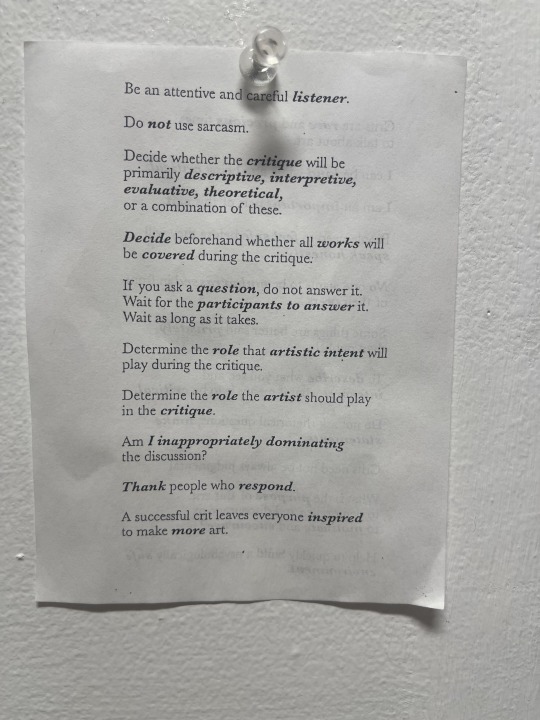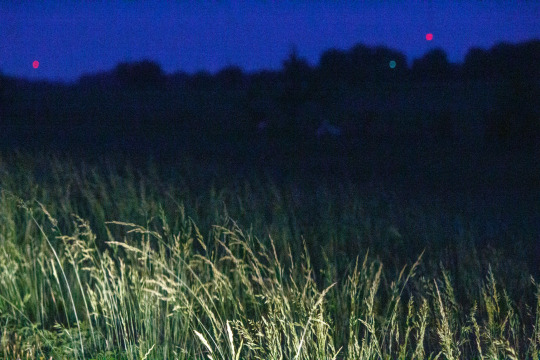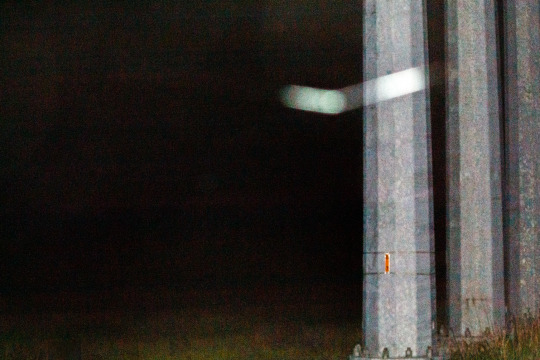#Artistic interpretation
Photo

So, last year, there was this art contest we did at the Unfamiliar Familiar discord server to celebrate Unfamiliar Familiar getting 3000 kudos on AO3 at the time, and of course, I joined and put my two cents on making a cover. That was when I was being experimental with my entry, and have it be mixed media (2012 Donnie in my usual lineless art style, 2012 Mikey in the acrylic paint style, and both Casper and Casey Jr. in simple lineart and flat colors). I didn’t win in the end, but I had fun nevertheless.
https://archiveofourown.org/works/41520255/chapters/104131731
#tmnt#tmnt 2012#tmnt 2018#rise adopts mikey#unfamiliar familiar#tmnt unfamiliar familiar#rise casey#2012 donnie#2012 mikey#casper#tmnt 2012 donnie#tmnt 2012 mikey#rise casey jr#rise x 2012 crossover#my art#fyp#i was going for the shards idea where the more casper stays in the rise dimension the more rise-like he becomes#artistic interpretation#the shards represent his old life as mikey#i was being experimental with my entry
120 notes
·
View notes
Text

i wanted to walk with you
#this scene makes me ill!!!#i love it!!#put that slowed down theme in anything#and i’m sold#i watch the reunions daily cuz of it#“the sword is wrong”shh be quiet#artistic interpretation#if you will#fe3h edelgard#fire emblem three houses#fe3h#edelgard fanart#fire emblem fanart#traditional painting#traditional art#my art#yippee#edelgard von hresvelg
41 notes
·
View notes
Text
Non so nulla con certezza , ma la vista delle stelle mi fa sognare . 💭
- Vincent Van Gogh

#italia#italy#frasi e parole#frasi pensieri#frasi tumblr#citazioni#motivation#cuore#frasi vere#amore#arte#vincent van gogh#artistic interpretation#artistic design#artista#pittore#dipingere#quadri
13 notes
·
View notes
Text

Grrarf- *cough* *cough* Is that… the last of it? I’m feeling better now. I thing that should be enough of the liquid to suppress it for now. Curse the Neo, I hate the way it tastes, but whatever to keep myself from clawing up the furniture and losing chips of my body in fights with 076. Anyways, I got to a sentient enough state yesterday to draw this art of the host I work with. To @survive-object-poll-island , this one goes to you. I was thinking about how I could barely work on things and ask you things due to how bad it got. Even thought I ended up at Belmonious, but it turns out it was just a Denny’s. Fun experience, but gee does it do a toll on my body. I can see areas where I’m scratched and chipped, but I’m mainly intact and that’s okay.
Host, I hope you understand that I care. I’ve luckily ordered the radiation from an undisclosed source, but I’m sure I’ll still keep in contact with you for research purposes. Seems like my original reason I’m known as the radiation cohost is soon to come to an end if all goes well. Whilst I was at it, I went to a banned cheese market and got some cheeses not allowed here. It was quite delicious if you ask me. I’m unsure of how to feel about this new part of me. I wish you some good wishes on your show though!
11 notes
·
View notes
Text

"The Triumph of Death" by Pieter Bruegel the Elder is a masterful and haunting depiction of the inevitability of mortality and the relentless march of death. Created in the mid-16th century during a period marked by widespread disease, famine, and war, the painting reflects the anxieties and uncertainties of the time.
In this landscape, Bruegel presents a vivid panorama of death's conquest over humanity. The foreground is dominated by a horde of skeletal figures, personifications of Death, wielding scythes and wreaking havoc upon the living. Bodies lie strewn across the ground, while others are herded into mass graves. The scene is one of chaos and despair, with no refuge or escape from death's grasp.
Bruegel's meticulous attention to detail adds to the painting's impact, with each corner of the canvas teeming with scenes of destruction and suffering. From the crumbling castles and burning villages to the skeletal figures engaged in macabre activities, every element serves to reinforce the overarching theme of mortality and the fragility of human life.
Despite the grim subject matter, "The Triumph of Death" also contains elements of dark humor and irony. In the midst of the chaos, Bruegel includes scenes of everyday life continuing as if oblivious to the carnage around them. Figures engage in futile attempts to ward off death or seek refuge in vain, highlighting the absurdity of human existence in the face of mortality.
The painting's message is clear: death is an inevitable part of the human experience, and no one can escape its grasp. Yet, amidst the darkness, there is also a reminder of the resilience of the human spirit and the enduring power of art to confront and explore life's greatest mysteries.
As we gaze upon Bruegel's "The Triumph of Death," we are confronted with the stark realities of mortality and the timeless questions it poses to humanity. It serves as a poignant reminder of the impermanence of life and the need to confront our mortality with courage and acceptance.
In our exploration of art, culture, and the unknown, "The Triumph of Death" stands as a powerful testament to the enduring relevance of art in grappling with life's most profound mysteries. It challenges us to confront our fears, contemplate the meaning of existence, and find solace in the beauty and complexity of the human experience.
#the mystic gallery#art#art history#artistic interpretation#artistic tradition#artistic journey#symbolism#Pieter Bruegel the Elder#The Triumph of Death
3 notes
·
View notes
Text
Such rich lore beautifully recreated. Chills.

#pokemon#pokemon ruby and sapphire#kyogre#groudon#rayquaza#twitter#twitter memes#funny stuff#art#artistic interpretation#pokemon lore
34 notes
·
View notes
Text
Noctis - Final Fantasy XV
In a world perpetually cloaked in the obsidian veil of darkness, Noctis Lucis Caelum, the Chosen King and bearer of a heavy destiny, bore the weight of fate like a shackle on his soul. This was not the Noctis we knew, the young prince who had embarked on a journey of discovery and destiny with his loyal companions, but a different version, one from another timeline. Here, he was a prisoner of his…

View On WordPress
#ai art#ai art blog#ai art blogs#ai art fanart#ai art lover#ai art prompt blog#ai art prompts#ai artwork#AI-crafted masterpiece#Alternate futures#Alternate Timeline#amazing ai art blogs#artistic expression#Artistic interpretation#authenticity#beacon of hope#beautiful ai artwork#Beauty in authenticity#Beyond expectations#Boundless exploration#Breaking chains#bright luminosity#Brightness within#Challenging narratives#chaos reigns#character portrait#complex nature#cool ai art blog#cool ai art blogs#Defying fate
2 notes
·
View notes
Text
here's a transcript of a rant i went on about overlord
sometimes people just are terrible, and even if they have a reason to be that way, it doesn't need to justify the terrible things they do. overlord is an excellent example of this concept done even better (than the comic i was talking about in the original conversation), though the anime kinda butchers the presentation. the whole concept with overlord is supposed to be that you start out having ainz do questionable things with a degree of justification that lets you rationalize he's still just misunderstood, but progressively ups the ante for the evil shit he does or lets happen to see how long you are willing to keep trying to justify his actions before you realize he's plain and clearly the villain. personally, i like to interpret this as an allegory for either parasocial attachments to bad people, or my personal favorite interpretation; the drive to continuously justify capitalism based on the honesty of it's founding principles despite the state to which it has reduced the world. obviously that's not too imply i think that was a concept that was intentionally implied in the story. maruyama probably just wanted to write about a cool scary skeleton man. but i think the interpretation holds some degree of merit!
#kingvirtueisdead#overlord fanfiction#overlord maruyama#overlord#fantasy#dark fantasy#evil#capitalism#socialism#rant#artistic interpretation#novels#books#anime#light novels#allegories
7 notes
·
View notes
Text



Wall art that’s easy and weightless
Space fragrancing with artist alter.
linktr.ee/PlushGemArt
#modern art#self love#self care#unique gifts#contemporayart#intentional living#fun art#gift ideas#incenseburner#incense#artisticcreations#artisticexpression#artistic design#artisticinspiration#artistic interpretation#artists on tublr#wall art#abstract art
1 note
·
View note
Text
this is my artistic interpretation of two metalheads trying to remember if the vocalist of a band is the one who died or if he stabbed another band member, or if that was a completely different band

#black metal#art#fake band#metal#someone usually dies for some reason#it’s tragic#artistic interpretation#meme
0 notes
Text
#Seasons Through Art: Exploring #Spring's #Impressionism, #Summer's #Fauvism, #Autumn's #Romanticism, and #Winter's #Minimalism
#Art and #nature have always been intimately connected, with the changing seasons offering endless inspiration to artists throughout history. Each season, with its unique #colors, #light, and #atmosphere, can be paralleled to a distinct art movement, reflecting the mood and essence of these cyclical phases. Let’s embark on a journey through the seasons, exploring their connections to various art…

View On WordPress
#Abstract Interpretations#Aesthetic Trends#Agnes Martin#Art and Culture#Art and Emotion#Art and Environment#Art and Imagination#Art and Inspiration#Art and Nature#Art and Perception#Art Appreciation#Art Education#Art Exploration#Art History#Art Movements#Art Techniques#Artistic Analysis#Artistic Concepts#Artistic Creativity#Artistic Depth#Artistic Evolution#Artistic Experimentation#Artistic Exploration#Artistic Expressions#Artistic Influence#Artistic Inspiration#Artistic Interpretation#Artistic Journey#Artistic Legacy#Artistic Mastery
0 notes
Text
#video#artistic interpretation#curatorial object#immaterial#the immaterial qualities of exhibitions#the machine#capitalism and the arts
0 notes
Text

A reminder, pinned to the wall of my colleague's office.
1 note
·
View note
Text





look alive, sunshine
#take care of yourself#they can see the dark spots underneath your eyes#my art#*ignores like 15 years’ worth of photography experience for the aesthetic*#the majority of these were just straight up photos of total blackness with the flash on; I drove the settings up to bring out the detail#and by detail I mean literally any interpretable noise#I’m not winning any photography contests anytime soon but the southern gothic community seems to be enthused#art#artwork#glitchcore#webcore#aesthetic#internetcore#abstract#glitch art#artists on tumblr#photography#night photography#graphic art#visual poetry
28K notes
·
View notes
Text

Adolf Hirémy-Hirschl's ''The Souls of Acheron'' (1898) is a captivating painting that delves into the realm of Greek mythology and explores themes of mortality and the afterlife.
The painting is inspired by Greek mythology, specifically the concept of Acheron, one of the rivers of the underworld. According to the myth, the Acheron served as a boundary between the world of the living and the realm of the dead, symbolising the transition from life to death. In antiquity, it was believed that the Acheron was the river which, according to ancient Greek mythology, Hermes would traverse, delivering the souls of the dead to Charon so they could reach the realm of Hades. Each soul passing through Charon's ferry had to give an obolus for the transport.
Hirémy-Hirschl creates a haunting and atmospheric scene, with mist-shrouded banks and ethereal figures. The desolate landscape and muted color palette evoke a sense of solemnity and introspection, setting the tone for contemplation of deeper existential questions.
The painting exudes a mystical allure, drawing viewers into its enigmatic world. The interplay of light and shadow, the ghostly figures, and the mist-shrouded landscape create an atmosphere of mystery and wonder. And serves as a reminder of the transcendent beauty that can be found amidst life's uncertainties and transitions.
''The Souls of Acheron'' elicits a range of emotions from its viewers, from solemn contemplation to existential dread. It invites viewers to confront their own mortality and to ponder the mysteries of life and death, while also evoking a sense of awe and wonder at the transcendent beauty of the scene.
The painting is rich in symbolism, with each element contributing to its thematic depth. The figures represent souls awaiting their fate in the afterlife, their draped garments and obscured faces adding to the sense of mystery. The barren landscape and gnarled trees suggest the desolation of the underworld and the uncertainty that lies in the journey ahead. The river Acheron serves as a potent symbol of passage and transformation. As the souls stand on its banks, they confront the mortality threshold, echoing humanity's journey towards the unknown.
Overall, ''The Souls of Acheron'' invites us to embark on a journey of introspection and contemplation, exploring themes of mortality, spirituality and the human experience in the face of life's inevitable transitions.
#the mystic gallery#art#art history#artistic tradition#artistic journey#artistic interpretation#symbolism#Adolf Hirémy Hirschl#The Souls of Acheron#mortality#spirituality
1 note
·
View note
Text
interpretation vs. facts
Okay so for future me, today I was in class and I started to talk about a painting and I started with "this is just my opinion/interpretation" and my prof stopped me and gave a long thing about how "all are is up to interpretation". And like yes, I agree with that an believe that, the whole "why are the curtains blue", I've ALWAYS been a very "why are the curtains blue" person and not a "maybe the curtains are just BLUE" person, BUT
The reason I stated that first was because I was assuming a lot of things about the painting to draw my conclusion or explain my line of reasoning. I stated that the woman in the dress looked to be in 1950s clothing, thus relevant to the message the painting is trying to portray. But I have minimal knowledge on fashion history, I could have been very wrong. And this is a small instance, and I was honestly just covering my ass because I'm paranoid someone is gonna know more than me and then my entire thought falls apart if I get a fact wrong, ya know?
But now I'm wondering... you have to take the facts of the actual piece into account, right? Like if a painting said "I hate rich people" you can't really say that someone's interpretation that this painting is pro-rich-people is accurate? And my prof stated that there is no right or wrong answer there are only interpretations but wouldn't the example I just gave be...Idk. I guess that argument can always be made. What a piece of art explicitly states doesn't mean that's what it's trying to say. Just because you make a film about a killer doesn't mean you think people should commit murder.
However, if something is explicitly racist I feel like saying "this thing isn't racist" even if it very much IS, like, that is a wrong take?
#sorry i have many thoughts#me rambles#im confused and I would like to hear other's thoughts#journal#school life#art#literature#artistic interpretation#writerblr#films
1 note
·
View note